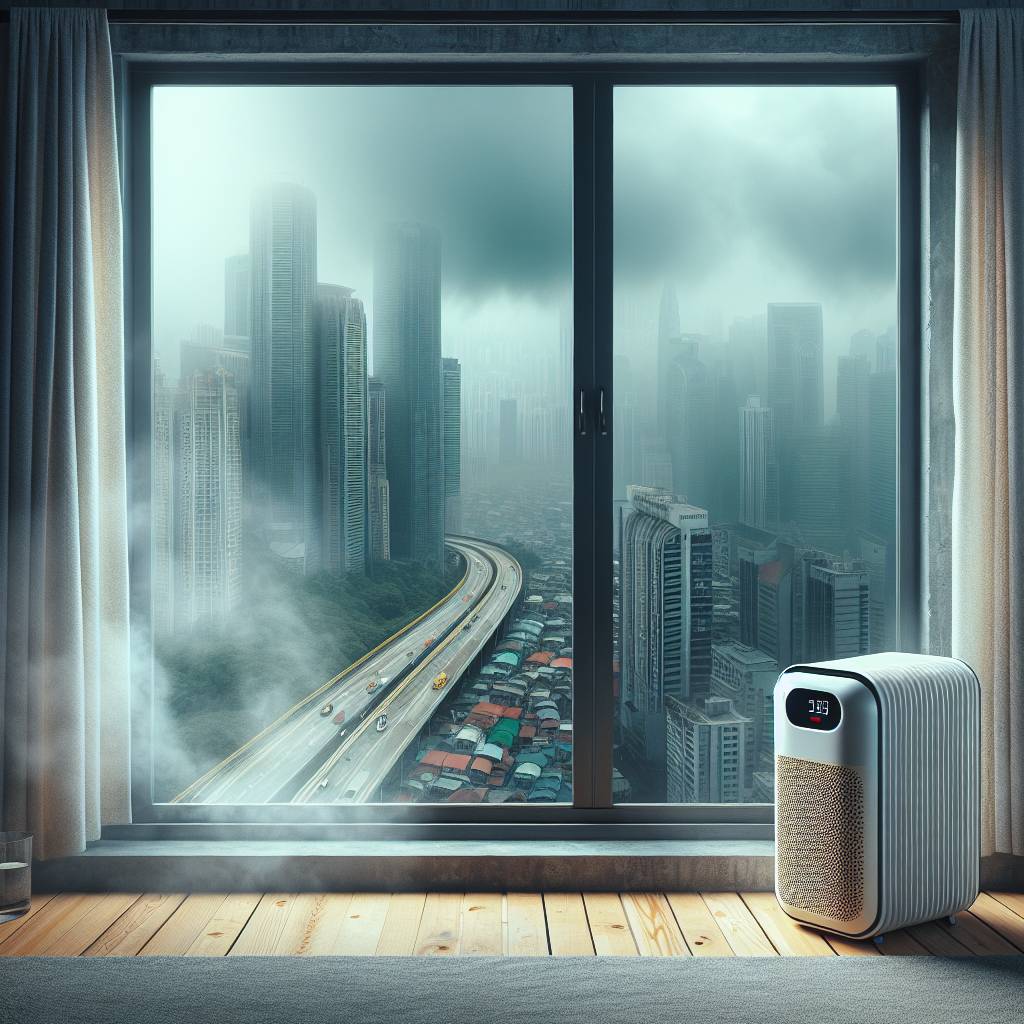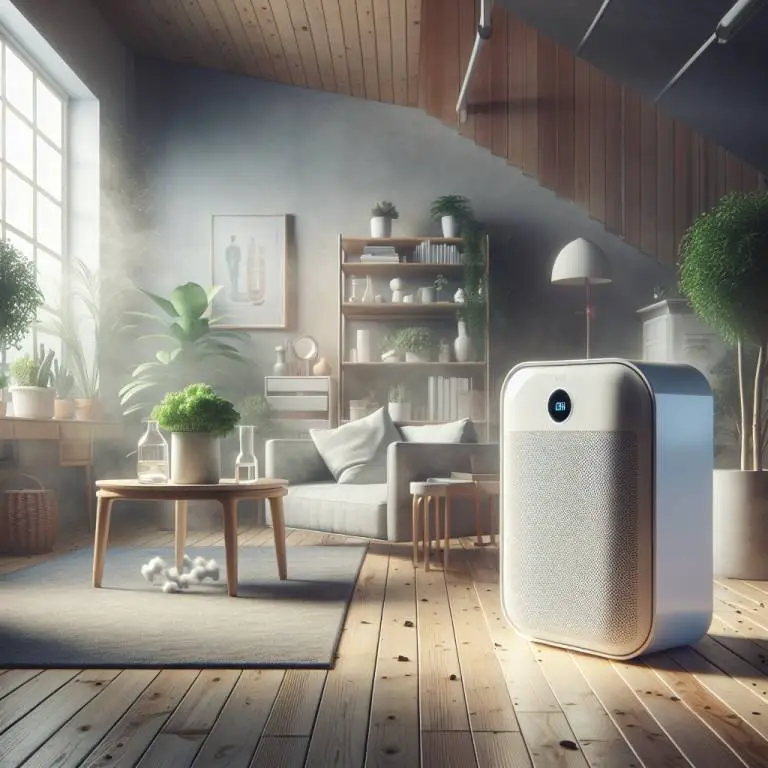Effectiveness Of Air Purifiers Against Outdoor Air Pollution For Asthma
Air purifiers can be effective against outdoor air pollution for people with asthma by filtering out harmful particles from the air inside homes. They work by pulling in polluted outdoor air and trapping pollutants like dust, pollen, and smoke before they can affect breathing. This helps reduce asthma triggers indoors, making it easier for asthma sufferers to breathe. However, it’s important to choose a purifier with a HEPA filter for the best results.

How do air purifiers work to combat outdoor air pollution?
Air purifiers combat outdoor air pollution by pulling in polluted air from the outside and filtering it before releasing clean air back into the room. They use fans to draw in air through filters that capture pollutants.
These devices are equipped with various types of filters, including HEPA (High-Efficiency Particulate Air) filters, which are highly effective at trapping particulate matter. Activated carbon filters can also absorb gases and odors, providing a cleaner indoor environment.
The purified air is then circulated back into the living space, significantly reducing the concentration of pollutants indoors. This process helps to create a healthier environment inside, especially for individuals with respiratory conditions like asthma.
Can air purifiers remove outdoor pollutants that exacerbate asthma symptoms?
Yes, air purifiers can remove many outdoor pollutants known to exacerbate asthma symptoms. These include particulate matter like dust, pollen, and smoke, as well as gases such as nitrogen dioxide and sulfur dioxide from vehicle emissions and industrial activities.
Desiring fresher air to help with asthma? Our favorite air purifier for asthma could be the key. Understand its role in purifying your home’s air. Check out the information now.
By using HEPA filters, air purifiers can trap fine particles that are often invisible to the naked eye but can penetrate deep into the lungs and trigger asthma attacks. Activated carbon filters complement this by absorbing harmful gases and odors.
This dual-action filtration makes air purifiers an effective tool in reducing exposure to outdoor pollutants indoors, thereby helping to alleviate asthma symptoms for sufferers.
What types of air purifiers are most effective against outdoor air pollution?
Air purifiers equipped with HEPA filters are among the most effective at combating outdoor air pollution. These filters can capture at least 99.97% of airborne particles as small as 0.3 microns in size, including dust, pollen, mold spores, and other allergens.
In addition to HEPA filters, devices with activated carbon filters provide added protection by absorbing gases and odors that HEPA filters cannot catch. This combination effectively removes a wide range of pollutants from indoor air.
Ionic and UV light purifiers also offer benefits by targeting airborne pathogens and allergens but may be less effective against larger particulate matter without a physical filter system in place.
Which pollutants can air purifiers effectively remove, and how do these affect asthma?
Air purifiers can effectively remove several key pollutants that affect asthma sufferers. These include particulate matter (PM), such as dust mites, pet dander, pollen, and smoke; volatile organic compounds (VOCs) emitted from paints and cleaning supplies; as well as bacteria and viruses.
Particulate matter can irritate the respiratory tract and trigger asthma attacks when inhaled deeply into the lungs. VOCs can cause similar reactions due to their irritating properties on the respiratory system.
By removing these contaminants from indoor environments, air purifiers help reduce potential triggers for asthma attacks, contributing to better respiratory health for individuals with this condition.
| Type of Air Purifier | Effectiveness Against Outdoor Air Pollution | Notes for Asthma Sufferers |
|---|---|---|
| HEPA (High-Efficiency Particulate Air) | High | Effective at capturing particulate matter (PM2.5 and PM10) which can exacerbate asthma symptoms. |
| Activated Carbon | Medium | Good for adsorbing gases and odors but less effective against particulate matter. Often used in combination with HEPA filters for better results. |
| UV (Ultraviolet) Light | Low | Targets microorganisms but has minimal impact on particulate or gas pollutants from outdoor air. |
| Ionizers | Medium | Can remove particulates from the air but may produce ozone, which can irritate the lungs and worsen asthma symptoms. |
| Ozone Generators | Not Recommended | Produces ozone, which is a lung irritant and can significantly worsen asthma conditions. |
| Electrostatic Precipitators | Medium | Can capture particulates but, like ionizers, may produce ozone as a by-product. |
How should one choose an air purifier for asthma relief considering outdoor pollution?
When looking for an air purifier to help with asthma, it’s important to consider the types of pollutants it can remove. You want a purifier that can tackle both large and small particles. This means finding a device with HEPA filters, as they are known for capturing fine particles that could trigger asthma symptoms.
Another key factor is the size of the area the air purifier can cover. Make sure the purifier is suitable for the room where you plan to use it most. If your living space has high levels of outdoor pollution seeping in, you might need a more powerful model or multiple units to ensure clean air throughout.
What are the limitations of air purifiers in filtering out outdoor pollutants?
Air purifiers have their limits when it comes to cleaning outdoor pollutants from indoor spaces. They work well for particles floating in the air but struggle with gases and odors. For example, volatile organic compounds (VOCs) from outside traffic or industrial activities might not be fully removed by standard HEPA filters.
Additionally, an air purifier’s effectiveness decreases if windows or doors are frequently opened, allowing new pollutants to enter. Regular maintenance is also crucial; failing to replace filters can lead to reduced efficiency and compromised indoor air quality, which is especially concerning for individuals with asthma.
Are there additional measures to enhance indoor air quality for asthma sufferers beyond using air purifiers?
Beyond relying solely on air purifiers, there are several strategies to improve indoor air quality for those with asthma. Keeping windows closed on days when outdoor pollution levels are high helps prevent contaminants from entering your home. Using exhaust fans in kitchens and bathrooms also reduces humidity levels and minimizes mold growth, another common trigger for asthma attacks.
Incorporating indoor plants can further enhance air quality by absorbing certain pollutants, though it’s important to choose species that don’t promote mold growth or pollen production. Regularly cleaning floors and surfaces to remove dust and pet dander also plays a critical role in maintaining a healthy indoor environment conducive to managing asthma symptoms effectively.
Final Thoughts
Selecting the right air purifier involves understanding its capabilities and limitations regarding outdoor pollutants. While these devices are beneficial in filtering particulate matter that exacerbates asthma symptoms, they cannot remove all types of contaminants alone. It’s essential to combine their use with other practices aimed at keeping indoor air clean.
Taking comprehensive steps towards improving indoor air quality represents a proactive approach to managing asthma triggered by outdoor pollution. By carefully choosing an appropriate air purifier and implementing additional measures like minimizing pollutant entry and maintaining cleanliness, individuals with asthma can create a safer living environment that supports their health and well-being.






